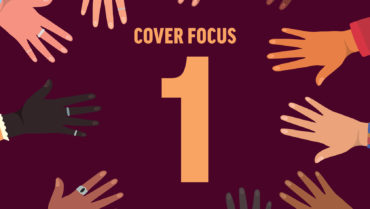Ophthalmology is one of the least diverse fields in medicine, which is an issue for delivering optimal care to an increasingly diverse patient population and for providing inclusive representation in the specialty to inspire the next generation of ophthalmologists.1,2 Traditionally, residency programs have relied on United States Medical Licensing Examination (USMLE) Step 1 scores to narrow down the pool of applicants considered for interview. With the elimination of Step 1 scores in 2022, programs must now rely on a more holistic review of applications.
ANALYZING THE IMPACT
At the University of Kansas, we sought to determine how deemphasizing Step 1 scores would affect underrepresented in medicine (URiM) and non-URiM applicants.
Per the SF Match, URiM applicants include those who self-identify as Black or African American, Hispanic, Latino, and/or Native American. During the 2021–2022 application cycle, a total of 97 non-URiM and 51 URiM applicants to the ophthalmology residency program at the University of Kansas were included for data analysis. The residency selection committee reviewed and evaluated the applications received with a standard, predetermined rubric of 11 categories, each with a maximum point value. Applicants were given points for Step 1 score, academics, research, activities, letters of recommendation, and demonstration of personal characteristics such as hard-working, good citizen, team player, and self-motivated. Distance travelled was considered as well. Average total scores were then calculated with and without Step 1. Analysis of variance models and chi-square tests were used to compare scores and categorical outcomes, respectively, between URiM and non-URiM applicants.
The residency selection committee awarded URiM applicants an average of 14.5 points (out of 18 total points), compared to 14.7 points for non-URiM applicants. When consideration was given to all other factors excluding Step 1 scores, URiM applicants were awarded an average of 12.8 points (out of 15 total points), 0.5 points higher than non-URiM applicants who averaged 12.3 points. The committee awarded an average of 1.78 points and 2.35 points (out of 3 total points) for Step 1 to URiM and non-URiM applicants, respectively (P < .0001). Thirty-seven out of 50 (73%) URiM applicants had their ranking reduced when Step 1 was considered, whereas this occurred with only 31 out of 97 (32%) non-URiM applicants who dropped in rank (P < .0001).
CONCLUSION
Relying on Step 1 scores to stratify applicants contributes to racial disparity in ophthalmology. Shifting the focus away from this exam in the residency selection process is one solution to improving diversity and inclusion. A holistic but standardized application review process that entails evaluating achievements in various domains throughout medical school and character traits is recommended, as these factors greatly contribute to an applicant’s potential for success as a resident.3,4
Analyzing applications for personal characteristics can be subjective, and unconscious bias will still be introduced. However, moving toward a more equitable and inclusive application review process will ultimately help to build a diverse cohort of ophthalmologists to care for a diverse patient population.
1. Isaq NA, Bowers S, Chen ST. Taking a “step” toward diversity in dermatology: De-emphasizing USMLE Step 1 scores in residency applications. Int J Women’s Dermatol. 2020;6(3):209-210.
2. Cooper LA, Roter DL, Johnson RL, Ford DE, Steinwachs DM, Powe NR. Patient-centered communication, ratings of care, and concordance of patient and physician race. Ann Internal Med. 2003;139(11):907-915.
3. Xierali IM, Nivet MA, Wilson MR. Current and future status of diversity in ophthalmologist workforce. JAMA Ophthalmol. 2016;134(9):1016-1023.
4. Conrad SS, Addams AN, Young GH. Holistic review in medical school admissions and selection: a strategic, mission-driven response to shifting societal needs. Acad Med. 2016;91(11):1472-1474.





